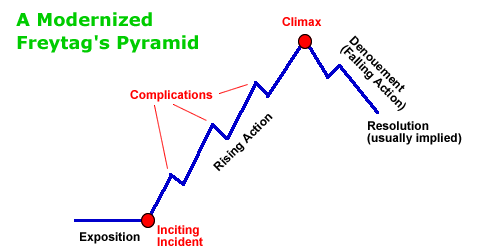
What Can We Steal From M. Hannah Langhoff’s “The Things We Don’t Talk About”?
Title of Work and its Form: “The Things We Don’t Talk About,” short story
Author: M. Hannah Langhoff
Date of Work: 2014
Where the Work Can Be Found: The story made its debut in Relief: A Christian Literary Expression. You can purchase the issue in print or digital form here.
Bonuses: Here is an excerpt from a piece Ms. Langhoff published in Cicada.
Element of Craft We’re Stealing: Narrative Structure
Discussion:
What a solid story! Rachel is a fourteen-year-old young woman who has a few problems. Not the least of which is the jerk boy who knocks her down as he rides his bicycle past her. This inciting incident results in Rachel taking Tae Kwon Do classes, where Rachel meets Mr. Cassidy, a high school black belt who teaches her how to protect herself. Rachel’s family is very religious; there is concern as to whether the martial arts lessons are leading her away from her faith. As you really should expect, Rachel learns about herself and her life in the course of the story’s events.
I guess what I love most about the story is that Ms. Langhoff employs a firm structure that makes her intent clear: she wants to tell you a meaningful story about an interesting character.
Let’s see how closely and gracefully Ms. Langhoff adheres to Freytag’s Pyramid:
Inciting Incident: Rachel gets knocked over by the bully.
Complication resulting from the Inciting Incident: Rachel starts taking Tae Kwon Do.
Complications resulting from previous Complication: Rachel meets Jacob Cassidy, a slightly older teacher at the dojang. Rachel sees Diane.
Complications resulting from previous Complications: Rachel shares a significant ride home with Jacob. Diane becomes prominent in her life.
Climax resulting from the Complications that resulted from the Inciting Incident: Rachel encounters the young man who kicked things off in the first place.
Denouement: Rachel’s actions reflect her changed character and self-understanding. Not only is she living in the “new normal,” but she has become the “new Rachel.”
See how beautifully everything comes together? Reading the story just FEELS GOOD.
Ms. Langhoff’s third person narrator is also very powerful and efficient. Check out the very first sentence:
Rachel’s walking along Smith Street, her backpack pleasantly heavy with algebra and sociology and The Call of the Wild, when she hears the buzz of wheels on the sidewalk behind her.
I love the way that the narrator establishes the present tense, the general age of the character, the specter of a threat and the protagonist’s general good-girl attitude. All in one sentence. The narrator is also unafraid to do the real work of the narrator; it skips through time and place at will:
The following Sunday is Rachel’s birthday.
And the narrator is also aware of what is happening in the mind of each character:
What Rachel’s mother doesn’t know, because of their silent agreement, is that Rachel is good.
Even if your narrator is not a “real character,” it’s still a powerful consciousness that is crafting your story. Erin McGraw, a wonderful writer and one of my teachers at Ohio State, reminded me of the narrator’s power with the phrase,
Meanwhile, back at the ranch…
Your narrator can have as much or as little power as is necessary to serve the story you wish to tell. It may also be beneficial to allow yourself to “separate” from the characters and events by thinking about the narrator as a writing partner over whom you have a lot of control.
Another part of the story that I admire is that Ms. Langhoff doesn’t tell us how to feel. Like everyone else, I’m saddened when people mistreat each other. It’s a sad fact of existence. A lesser writer (such as myself), might have enlisted the narrator in judging the sins of the characters. Judgment, however, is reserved for the reader. Ms. Langhoff’s narrator simply recounts events and thoughts, ensuring that the reader feels the power.
The principle is a corollary of “show, don’t tell.” If we follow Ms. Langhoff’s lead and SHOW the reader what is happening and what people are saying and thinking, then the reader is more likely to have an emotional reaction. If we’re TOLD how to feel, it’s probably not going to work.
Here’s a strange example. (Strange examples are more fun than boring ones, of course.) Remember that father who shot his daughter’s laptop to punish her for saying mean things about him on Facebook?
The father’s rhetorical goal was to make his daughter feel bad for not wanting to do chores and for using naughty words. How did he choose to get his message across? With the use of firearms. It seems to me that TELLING his daughter how to feel-and involving firearms-teaches a kid far different lessons. For example, “grownups solve their problems with gunplay.” A heavy-handed third person narrator may not be as effective as one that is a little more hands-off.
What Should We Steal?
- Scale Freytag’s Pyramid. Well-structured stories just FEEL RIGHT.
- Think of your third person narrator as a character with full citizenship in your story. Your narrator is a conduit, but it’s also a version of you in some way. Which strings will you, as the puppet master, choose to pull?
- Leave the analysis for the reader. Okay, we’re ALL bummed that people are sometimes unpleasant to each other. Let us decide how we will feel instead of telling us.
Fun afterthought: I’m amused that the father who shot the daughter’s laptop in an attempt to publicly shame her into behaving appropriately is upset at Dr. Phil for attempting to publicly shame him into behaving appropriately.
2014, M. Hannah Langhoff, Narrative Structure, Ohio State, Relief: A Christian Literary Expression


Leave a Reply